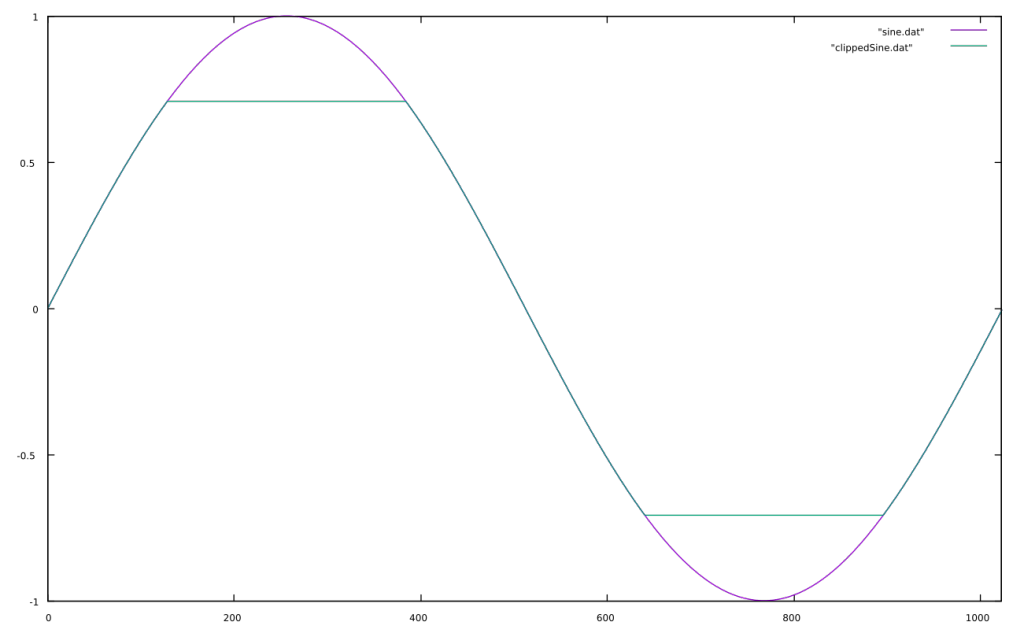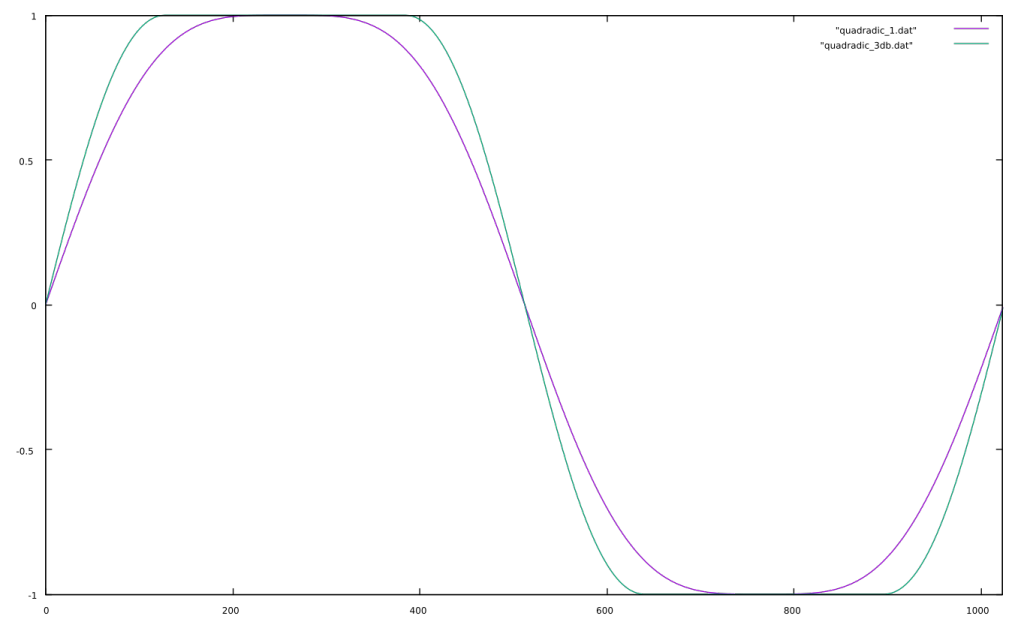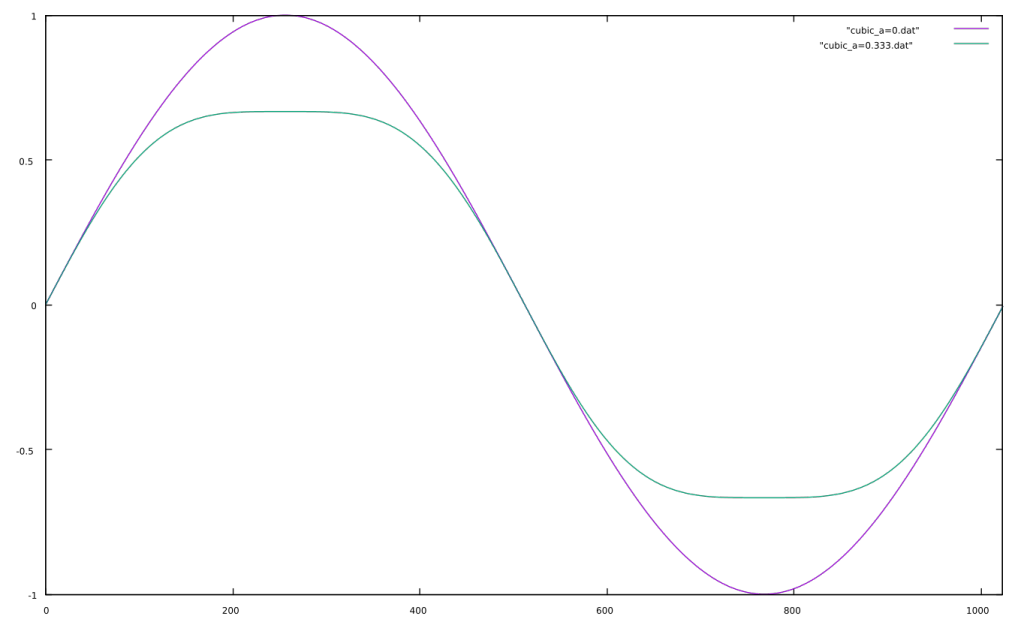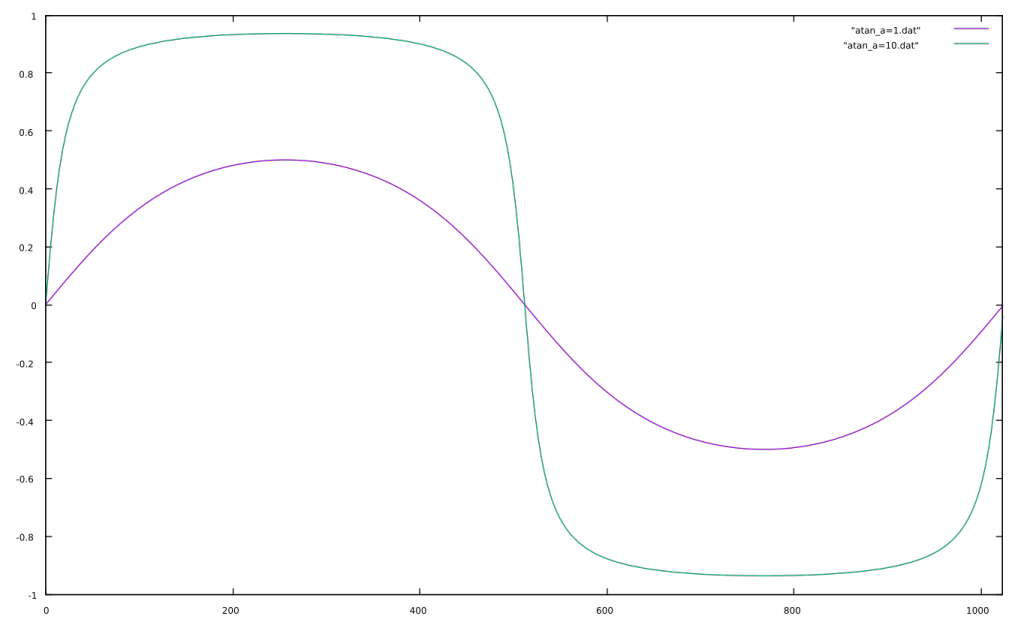What if the peak amplitude exceeds 1?
If the peak amplitude exceeds 1, the result is distortion of the signal in the form of clipping. This can damage certain hardware and is best avoided.
If the level above 1 is known, one can simply multiply the signal by 1 minus that value.
More likely, however, whether or not the amplitude will exceed 1 is unknown. In this case there are several options: hard clipping. soft clipping, limiters, or compressors.
Hard Clipping
Hard clipping is done by limiting the maximum and minimum sample values. When a signal exceeds the limit, a hard edge is created that creates high frequency harmonics (distortion).
than limit or less than -limit *(input+sample) if(*(input+sample) < -1.0 * limit) *(output+sample) = -1.0 * limit; else *(input+sample) }

In this image, the purple line is a sine that is unclipped with a maximum amplitude of 1. The green line is a sine that is clipped at -3 dB (approx. 0.707 linear amplitude). Notice the hard edge at the clipping limit.
Soft Clipping
Soft clipping is another method of clipping that softens the edges of the clipped boundary using non-linear functions. This can be done several ways; most often, however, you’ll see the use of the tangent function or quadratic functions.
Cubic Equation Soft Clipping
By calculating the coefficients beforehand, creating a soft clipper with the cubic equation can be relatively fast. This method, however, does not allow scaling via a gain coefficient and thus acts to shield the output from being driven too hard.
y = -0.5x^3 + 0x^2 + 1.5x + 0Simplified
y = -0.5x^3 + 1.5x
output output
Here is a plot of a sine wave run through this function when the input gain is 1 (0dB, purple) and 1.412 (+3dB, green). When this function is ran, you can see the distortion occur as the steepening of the angle as the waveform ascends and descends. Notice, however, that when the input gain is above unity, the function prevents it from going above 1.

Cubic Soft Clipping Simplified
y = x - \bigg( \alpha \cdot x^3 \bigg )
In this function, alpha is the scaling coefficient and can vary between 0 and the limit. It is typically 1/3 and produces a clipped level of about -3dB. When the scaling coefficient is 0, the signal is passed unaffected (no clipping, no distortion) but as alpha is increased, the waveform is clipped softly.

Tangent Function Soft Clipping
y = \frac{2}{\pi} \text{ } arctan(\alpha \cdot x)
Notice that when alpha >> 10, the function approaches infinite clipping distortion; i.e. approaches a square wave with soft edges.
Thoughts
Although both of these methods can produce soft clipping, the cubic functions are generally more efficient since trigonometric calculations must be performed on every sample in the tangent function.
By cascading multiple softclippers, one can crudely approximate analog distortion.
